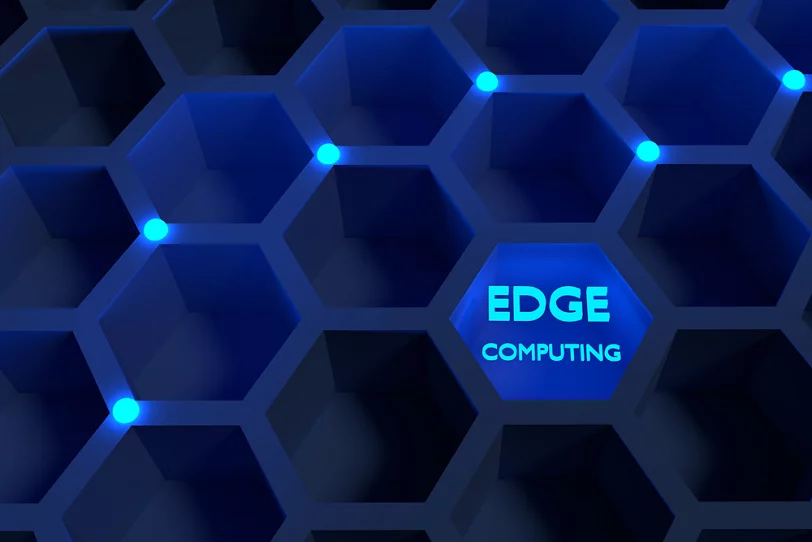
Edge Computing is the future of network architecture. It will help you to break beyond the restrictions of old cloud-based networks. Cloud computing is playing a very important rule in modern IT network architecture.
But, IoT devices are forcing enterprises to look for better network architecture. According to a report by Gartner, there are going to be more than 25 billion IoT devices by 2020. The biggest challenge of IoT devices that we need to collect and process the data. Most of the IoT professionals think that they are very slow at collecting data. Manufacturers are currently collecting IoT data and transmitting it to a data center or cloud. The data is analyzed and processed in the data center. This process is very reliable. But, it is also very time-consuming. Thus, more and more companies are working on edge computing. Most people think that Edge computing is the next big thing in the IT industry. Edge computing uses a simple principle for collecting and processing the data. But, there are various benefits of using edge computing.
What is Edge Computing?
In cloud computing, all the data is gathered on the edges of the network. It is processed at the main servers. Cloud architecture became famous because most of the devices like smartphones are located near the edge don’t have enough storage capacity and computational power. Most of the devices can’t process or analyze the collected data. We can most of the devices with WiFi or other high-speed networks. But, their hardware capabilities are still limited. Thus, we can’t use normal devices for processing or analyzing data.
But, this has changed in recent years. The storage technology has improved rapidly with time. Internet of Things devices has enough storage and computational power. They can store, analyze and process more data. Enterprises are using IoT devices for optimizing their networks. They want to locate their processing functions at their network edge. This will allow them to analyze and process data in real-time.
In edge computing, the data doesn’t need to travel back to the server. Thus, it can help us in reducing latency and improving performance. Edge computing helps in optimizing the data-driven capabilities of the network. It does so by collecting, analyzing and processing data close to the end-user. Edge computing can be used in a data center, smart cities, autonomous vehicles, and the healthcare industry.
Advantages of Edge Computing
-
Speed
Speed is the most important thing for most companies. Financial companies that use a trading algorithm relies heavily on fast computing. Companies can lose millions of dollars due to slowdown. The healthcare industry also heavily relies on network speed. A fraction of second is enough to decide the fate of a person. If your business is providing data-driven services, then slow speed can frustrate your customers. This can damage the reputation of your enterprise.
The best thing about edge computing is that it is extremely fast. It will help you in reducing the latency of your network. If you’re using edge computing, then IoT devices will process data in edge data centers or locally. Thus, data doesn’t need to travel back to the central server.
-
Security
If all your data is traveling back to the main server, then your operating processes and data are highly vulnerable. A single DDoS attack is enough for disrupting your entire business. Edge computing will distribute data processing work across various data centers and devices. Thus, it will become difficult to DDoS your network. It will also increase the overall area of attack. Thus, hackers can’t affect your whole network by attacking one device. If the data is stored and analyzed locally, then it can be easily monitored by your security team. It will also help your company in overcoming privacy regulations.
-
Scalability
It is expensive to expand your IT infrastructure. You need to buy new equipment for your infrastructure. Also, you need to find extra space for your equipment. Thus, it becomes very difficult to scale up your data center.
But, you can easily scale up your infrastructure by using edge computing. You can buy devices with enough computation power for expanding your edge network. Enterprises don’t need to establish their own private and centralized data centers for their data needs. You can combine edge computing with colocation services for expanding your edge network. Also, you don’t need to invest your money in buying new devices. You can buy IoT devices for expanding your network. Thus, you can expand your network without investing a lot of capital.
-
Reliability
Edge computing offers better reliability when compared to cloud computing. All the edge data centers and IoT devices are located near to the users. Thus, there is a very less chance of network outage. If your edge center is down, then IoT devices will automatically handle the request. They can handle most of the functions on their own. Every traditional data center also has some limitations on the amount of data it can transmit. You will soon hit your bandwidth limits. After that, you need to invest more money in improving your bandwidth infrastructure.
Conclusion
Edge computing is the future of the modern data center. It is the perfect time for every company to shift to edge computing. You can take advantage of IoT devices. Edge computing will increase your network speeds. Thus, it will automatically help in improving your customer experiences. You can easily scale up your network. Hence, Edge computing is perfect for companies that are growing very fast. If you are already using cloud infrastructure and colocation services, then it is the best time to switch to edge computing. You can use edge computing for optimizing your network. If you need more information about edge computing, then you can contact Bleuwire.
Contact us today to learn about Bleuwire™ services and solutions in how we can help your business.





